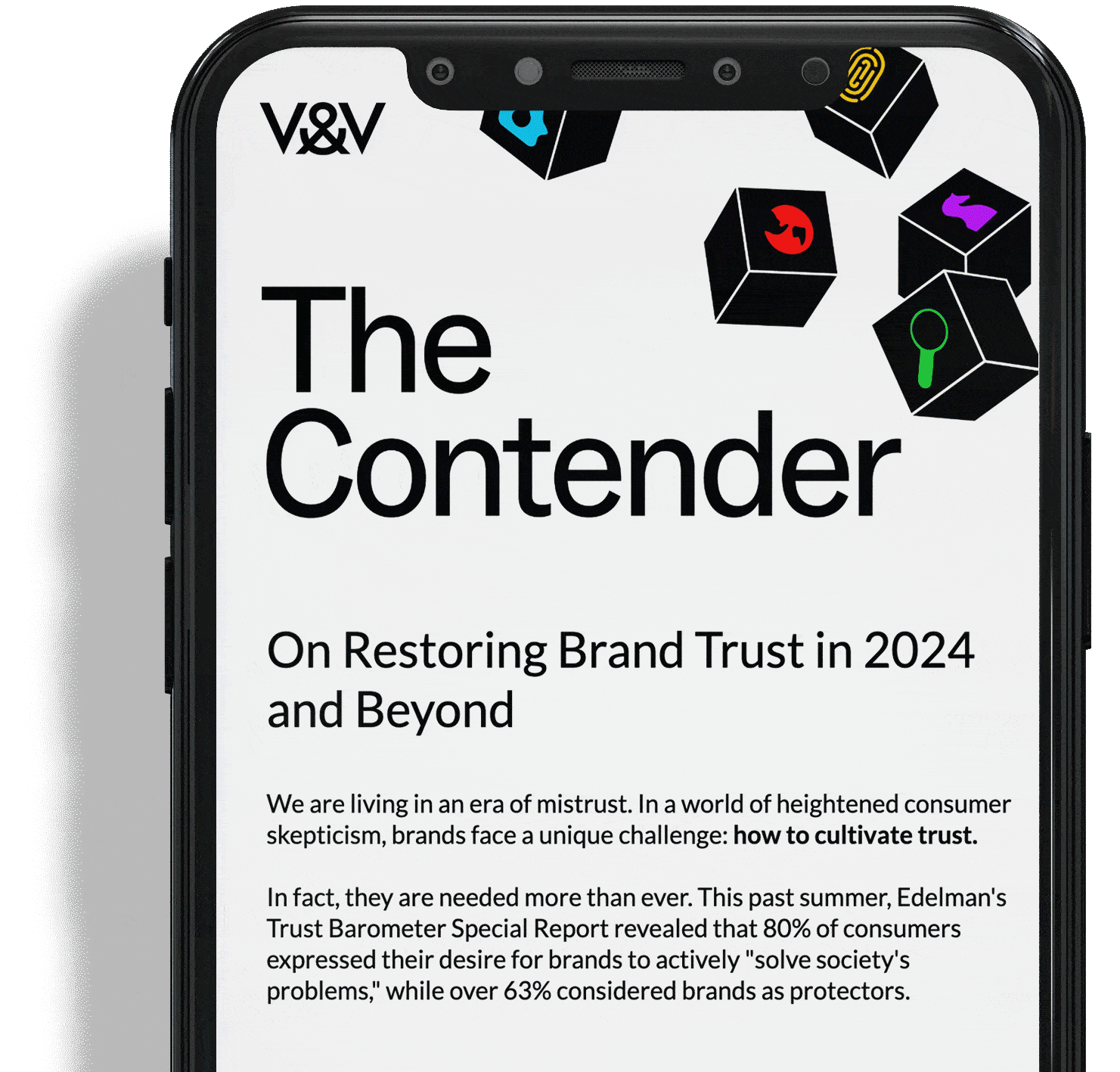Challenger Brands believe that business can and must be a force for good, and that their responsibility extends well beyond shareholders. It extends to their customers, their employees, society, and the planet.
But what is the opposite of a Challenger Brand? Is being a Challenger Brand a binary choice – to be or not to be? How does a brand build their challenger muscle to embrace change and become a positive force for transformation?
The Opposite of a Challenger Brand
The opposite of a Challenger Brand can be categorized as an Establishment Brand. These brands are aware of the need for change but deliberately defy it. Often this perspective comes from the market leader but any brand can fall into this category, even previous challengers can lose their spirit with time.
Consider the signs of change. When customers, the public, and the media implore a brand to reevaluate its practices and embrace a better way, how does the brand respond?
The opposite of a Challenger Brand manifests as an unwavering approach that disregards external feedback and fails to acknowledge the harm it may be causing. This stagnant mindset resists alternative viewpoints and hampers improvement. The consequences can include loss of market relevance, declining customer loyalty, and missed opportunities for innovation.
The Consequences of Establishment
It’s crucial to understand the negative consequences of being an Establishment Brand. By choosing to ignore the signs of change and remaining stagnant, these brands risk alienating their customers, damaging their reputation, and hindering progress in important areas.
In a rapidly evolving world, where social and environmental issues are at the forefront, an unwavering approach can contribute to harm rather than progress.
The 2023 Meaningful Brands™ Study showed that meaningful brands are not just good for the world, but also have stronger bottom lines outperforming the stock market by 222%. Deliberately defying change has a negative impact on both society and the bottom line.
The Evolution of Challenger Brands
History has shown us that brands can transition from being Establishment Brands to Challengers and vice versa. Nike, the renowned athletic wear company, provides a compelling example of such a transformation.
In its early days, Nike entered the highly competitive sportswear market, competing against industry giants like Adidas and Puma. As a Challenger Brand, Nike disrupted the industry with innovative designs, captivating marketing campaigns, and endorsements of underdogs who went on to become high-profile athletes.
However, as Nike experienced remarkable growth and success, it made choices that led to controversy and a departure from its challenger roots. One choice was the outsourcing of labor to overseas factories, primarily driven by the desire for lower production costs and increased profit margins. This decision placed Nike at the center of public scrutiny, as reports exposed labor exploitation and poor working conditions in these factories.
The brand faced mounting criticism from consumers, activists, and the media, compelling them to acknowledge the need for change. Under immense public pressure, Nike took steps to address the issue, raising the minimum age of workers, improving factory conditions, and implementing increased monitoring and audits.
It is important to note that Nike’s journey towards ethical manufacturing practices is ongoing. While progress has been made, there is still room for improvement. Nike still has a long way to go to improve its score in the Fashion Transparency Index and to reinstall its commitment to the Worker Rights Consortium (WRC).
Nike’s story serves as a reminder that even well-established brands can lose sight of their challenger spirit. However, it also showcases the potential for growth and transformation. By acknowledging the harm caused, taking responsibility, and implementing meaningful changes, brands can reclaim their challenger mindset and positively impact society.
The First Step Towards Transformation
Recognizing the need for change is just the beginning. Becoming a Challenger Brand is not an instantaneous shift—it’s a journey that begins by challenging the way we think and act. This journey starts with asking crucial questions such as:
- “Who loses when we win?”
- “Are we hindering progress in important areas?”
- “Why does it have to be this way?”
- “How could this be better?”
These inquiries allow us to critically examine our practices and identify areas where change is needed. It entails conducting internal audits, engaging with stakeholders, and seeking diverse perspectives. By embracing these questions and actively listening to the answers, brands take the first step towards becoming more responsible and impactful.
Overcoming Challenges and Resistance
Transitioning from an Establishment Brand to a challenger requires overcoming challenges and resistance. Change can be met with skepticism and reluctance, both internally and externally. However, it is essential to recognize that true progress often stems from pushing beyond comfort zones and embracing new ideas.
Empower Change Agents: Within every organization, there are individuals who recognize the need for change and are eager to drive it. These change agents should be empowered and given the resources and support they need to champion new initiatives. By fostering a culture that encourages innovation and rewards calculated risks, brands can tap into the potential of their employees and fuel transformation.
Build Alliances and Collaborations: Transforming mindsets and practices is not a solitary journey. Establishing partnerships with like-minded organizations, industry leaders, and experts can provide valuable insights, shared resources, and collaborative solutions. By working together, brands can amplify their impact and drive change on a larger scale.
Embrace Empathy: Becoming a Challenger Brand is not just about transforming practices; it also requires transforming mindsets. Cultivating empathy and developing a deep understanding of the needs and aspirations of customers, employees, and society as a whole is crucial. By embracing an empathetic approach, brands can foster a culture of continuous improvement, where everyone feels empowered to contribute to positive change.
Communicate the Vision: Effective communication is key to rallying support and generating momentum for change. Brands must clearly articulate their vision for transformation, emphasizing the positive outcomes that can be achieved. This vision should permeate the brand’s messaging, from the value proposition to brand promises and taglines. By engaging stakeholders through transparent and authentic communication, brands can build trust, generate enthusiasm, and inspire others to join the movement.
Celebrate Small Wins: The path to becoming a challenger is a series of incremental steps. Celebrating small wins along the way helps maintain motivation and momentum. Acknowledging and highlighting the positive changes and their impact reinforces the brand’s commitment to transformation, both internally and externally. These small victories also serve as proof points that inspire further progress.
Embrace Continuous Learning: A challenger mindset is rooted in a hunger for knowledge and continuous learning. Brands must stay curious, adapt to evolving trends and insights, and be willing to course-correct when necessary. By actively seeking feedback, staying informed about industry advancements, and fostering a culture of experimentation, brands can remain agile and relevant in a rapidly changing landscape.
Embracing the Journey of Transformation
Becoming a Challenger Brand is not an all-or-nothing proposition. It is a journey of self-reflection, growth, and positive transformation. Brands can gradually build their challenger muscle by embracing incremental change, challenging the status quo, and cultivating a mindset of empathy and responsibility.
Change is not always easy, and it requires commitment, resilience, and a willingness to confront uncomfortable truths. However, the rewards are significant. Challenger Brands have the opportunity to drive meaningful change, shape industries, and positively impact society and the planet.
Let us question our practices, learn from our successes and failures, and take measured steps towards becoming challengers, together. By embracing change and aligning our business practices with a greater purpose, we can pave the way for a brighter future where brands are powerful forces for good, driving innovation, fostering sustainability, and championing positive social change.




